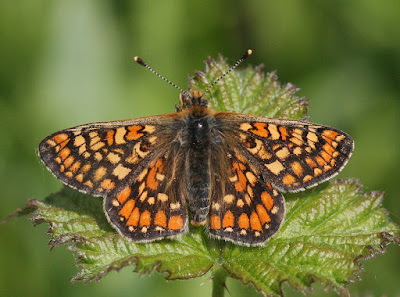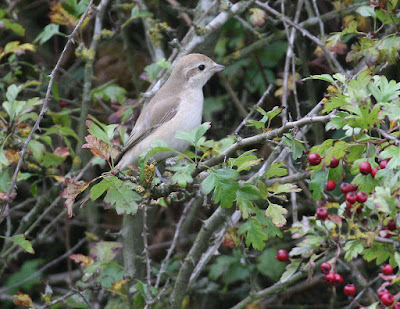Violet tailed Sylph
|
I am off to Colombia for the whole of January 2016 and will return in February 2016
So may I wish a Happy New Year and give thanks to everyone who reads my blog.
Here are some images of birds and wildlife that served to bring such pleasure to my world in 2015
Little Bustard Fraisthorpe East Yorkshire 1st January 2015
A great start and present for only two days. I have always wanted to see one and I did!
|
Second winter Kumlien's Gull Littlehampton West Sussex 30th January 2015
Came back to spend a second winter in 'LA' (L'il 'ampton). Well why not?
|
Common Buzzard Kingham Oxfordshire 3rd February 2015
A very tame and pale individual that hunted worms from the hedgetops by the road
Fieldfare Churchill Oxfordshire 4th February 2015
|
Long eared Owl Burton Mere RSPB Lancashire 8th February 2015
Seen later on the same day as the Laughing Gull and just rounded things off nicely
Little Bunting Cardiff Wales 10th February 2015
Watched from just a couple of metres. It was so good I went to see it three times!
Female Ferruginous Duck Slimbridge Gloucestershire 10th February 2015
A wild bird apparently, mixing it with the captive ducks in the Rushy Pen
Male European Stonechat Cheltenham Gloucestershire 14th February 2015
Spending the winter with its mate in an area of set aside on the outskirts of the town
Male Dartford Warbler Cheltenham Gloucestershire 14th February 2015
The classic double where a Dartford Warbler turns up with a pair of stonechats
Mandarin Duck Cannop Ponds Forest of Dean Gloucestershire 21st February 2015
Looking totally out of place with its 'over the top' plumage but always welcome
Immature male Harlequin Duck Aberdeen Scotland 27th February 2015
It spent over a month on the River Don and featured on BBC 's Winter Watch
|
Mountain Hare Cairngorms Scotland 28th February 2015
I have always wanted to see one in its winter coat
|
Ptarmigan Cairngorm Ski Slope Scotland 28th February 2015
Another Cairngorm native in its white winter garb
|
Crested Tit Loch Garten RSPB Scotland 28th February 2015
The rarest of our native tits but easily the most attractive
|
Adult Ring billed Gull Dingwall Ross & Cromarty Scotland 28th February 2015
Back for its second winter on Dingwall boating lake. A long way from the USA
|
Penduline Tit Exmouth Devon 24th March 2015
It took two visits to see it but was well worth the effort when I got views like this
Juvenile Iceland Gull Cardiff Wales 3rd April 2015
Right in the city centre on the River Taff. We tempted it in with a sliced white loaf
|
Male Garganey Stratfield Brake Kidlington Oxfordshire 4th April 2015
Always an exciting spring migrant especially when giving views like this
|
Immature Bonaparte's Gull Radipole Lake RSPB Dorset 7th April 2015
A delicate and attractive small gull that crowned a great day out at Radipole
|
Common Nightingale Pulborough West Sussex 14th April 2015
Songster supreme
Purple Sandpiper Newhaven East Sussex 24th April 2015
Always a must see on visits to my old haunts in Sussex
Glanville Fritillary Croydon Surrey 30th May 2015
The only one we saw on a dull day but we only needed to see this one for success!
Small Pearl-bordered Fritillary Bentley Wood Wiltshire 10th June 2015
The triumphal result after much searching
Marsh Fritillary nr Salisbury Wiltshire 10th June 2015
The fourth species of fritillary we saw in one day
Hudsonian Whimbrel Pagham West Sussex 11th June 2015
The North American version of 'our' Whimbrel and very rare!
Photo c Matt Eade
Male Cretzchmar's Bunting Bardsey Island Wales 18th June 2015
You would not believe the logistics that were necessary to see this elusive beauty
Photo c Matt Eade
Thrift Clearwing Bardsey Island Wales 18th June 2015
A very rare moth that the warden showed us while we were twitching the bunting
Photo c Steve Smith
Black Hairstreak Oxfordshire 25th June 2015
Much coveted by butterfly enthusiasts and our local lepidopteran rarity
White Letter Hairstreak Brighton Sussex 11th July 2015
Often hard to see but in the Brighton Pavilion Gardens not so!
Male Purple Emperor Bernwood Forest Oxfordshire 15th July 2015
The supreme native butterfly of the British Isles
Brown Hairstreak Oxfordshire 2nd August 2015
We look for it with eager anticipation every year and are never disappointed
|
Acadian Flycatcher Dungeness Kent 22nd September 2015
The first ever for the UK and only present for one day. A mad dash to see it in the rain
Photo c Steve Nuttall
|
Juvenile Citrine Wagtail Spurn East Yorkshire 4th October 2015
The first one I have ever seen in the UK or anywhere else for that matter!
|
Isabelline Shrike Beeston Norfolk 13th October 2015
It's always good to see one of these pale shrikes
|
Male Wilson's Warbler Isle of Lewis Outer Hebrides Scotland 16th October 2015
The second ever for the UK. An absolute gem of a bird and my bird of the year
Black Redstart Wallingford Oxfordshire 25th November 2015
Present for just three days in a tiny churchyard in the centre of the town
|
Grey Phalarope Farmoor Oxfordshire 30th November 2015
One of two that spent a number of days at the reservoir delighting everyone.
Juvenile Great Northern Diver Farmoor Res Oxfordshire 2nd December 2015
It's always good to see such a magnificent bird so close
|
Eurasian Hoopoe Wall Heath West Midlands 8th December 2015
A truly exotic visitor to a decidedly less than exotic location!
|





























































